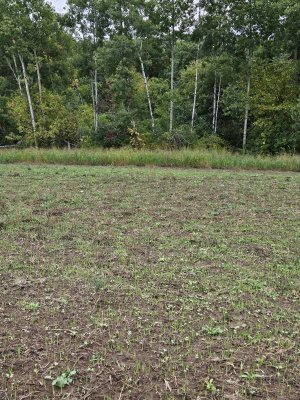You want the biomass. It acts like a slow release fertilizer, shields the soil from sun and erosion, acts like a sponge to hold water. You really want to avoid the disc if possible, but it’s not terrible to light disc at times.
You do have to manage smaller seeds. Sometimes you need to mow high a couple of weeks before seeding, then mow again at seeding. Mulching mowers or flail mowers work well.
For fall planting you really don’t have to use gly. Mowing will terminate most weeds, and what it doesn’t the change of seasons will. Herbicides need to be used at times for problem weeds, but part of throw and mow is to lower herbicide usage. Your plots don’t need to look like a farming magazine. Good weeds along with forage you grow is all beneficial. Goal is to get soil in harmony with microbes and plants. Grow things known to do well in your region.
